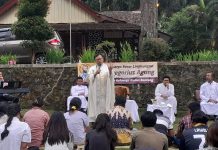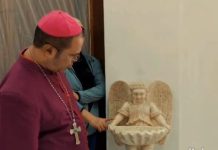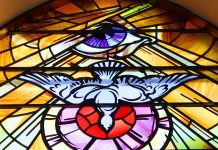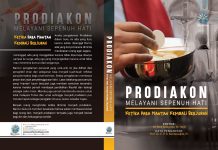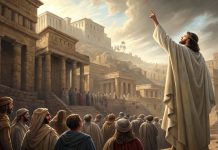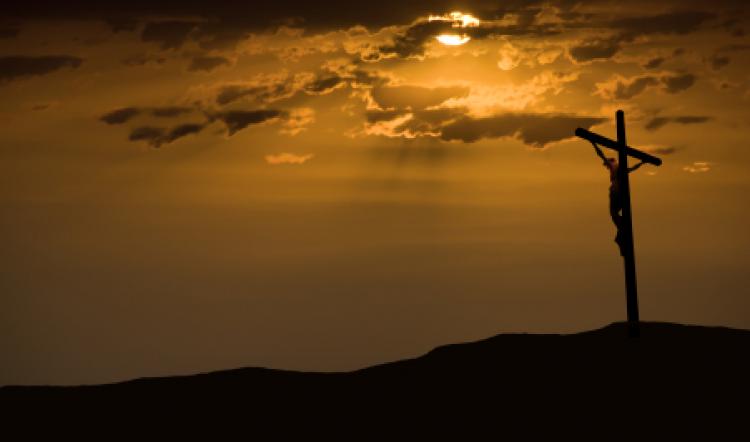REKAN-rekan yang budiman,
Barusan saya kembali membicarakan beberapa perkara tafsir dengan Oom Hans. Ia tak keberatan surat-menyurat kami diteruskan kepada para peminat lain.
Ada pembicaraan tambahan mengenai Yoh 13:1 mengasihi “sampai pada kesudahannya” (eistelos) dan Yoh 19:30 “sudah selesai” (tetelestai). Juga ada uraian tambahan tentang Yes 52:13-53:12 yang juga dibacakan pada liturgi Jumat Agung.
Salam,
A. Gianto
——————
Oom Hansyang baik.
Bagaimana kabarnya? emoga Oom dan Oma Mir berbahagia di tempat. Ini nih, saya sedang menyiapkan komentar sana sini mengenai perkara yang Oom tulis dan yang kami bacakan pada hari Jumat Suci. Menurut Oom, Yesus berkata “Sudah selesai!” (Yoh 19:30). Kata seorang rekan di bumi sini, ini ungkapan rasa lega, penderitaan sudah lewat, rampunglah karya keselamatannya.
Tapi saya kagak sreg dengan uraian seperti itu. Rasanya kok kayak tontonan, layar turun, tamat, selesai, kukut. Oom kan gunain ungkapan Yunani “tetelestai”, yang saya ngerti dari kata “telos”, yaitu akhir yang merangkum perjalanan dari awal, yang memberi arti pada semua yang telah dijalani. Rasa-rasanya Yesus kan mau mengatakan sudah terlaksana sampai utuh.
Kayak versi Latin yang cespleng “consummatum est” dua ‘m’ itu. Ingat-ingat dulu ketika kami masih suka omong Latin, consummatum itu kan dari consummare, yakni “merangkum” semua sampai “utuh”, dan bukan dari consumere satu ‘’m’ yang berarti “menghabiskan” (makanan/waktu/duit), yang ada hubungannya dengan konsumsi.
Untuk consummare, cosummatum, yang bener orang Jakarta bilang “udah kecapai”, kalau di Jawa ya “wis klakon”.
Oom gimana?
Ada lagi soal lain. Kalau betul, Oom kan mau garisbawahi gagasan bahwa Yesus itu kurban Paskah yang diterima Yang di Atas sana sehingga benar-benar jadi silih bagi dosanya umat manusia. Karena itu Oom memakai urut-urutan kronologi peristiwa secara lain, yaitu penyaliban terjadi sebelum Paskah, berbeda dengan Mark cs. yang menaruh Paskah pada perjamuan malam terakhir. Iya kan?
Saya sudah pernah katakan di sebuah milis bahwa perjamuan terakhir di mana Yesus membasuh kaki murid-murid itu bukan perjamuan Paskah, melainkan sebelumnya.
Pada awal perjamuan itu, Oom sebutkan bahwa Yesus mengasihi orang-orangnya yang di dunia ini dan betul mengasihi “eis telos”, sampai pada kesudahannya (Yoh 13:1).
Ini sepertinya antisipasi atau padahan bagi kata-kata Yesus “tetelestai”, sudah terlaksana, yang diucapkannya pada saat terakhir di salib? Jadi kedua ayat itu saling menjelaskan. Ia mengasihi orang-orangnya sampai terlaksana sesuatu yang mengubah arah hidup mereka, dan hidupnya sendiri, begitu kan? Tolong dikomentarin.
Salam hangat,
Gus
PS: Ada teman yang tanya mana nomer WA-nya Oom, mau nunut kirim pesan buat
Oma Miryam seperti ini 2UBOK4ever.
Kawan-kawan itu sih sekarang genggamannya smartphone dan bukan lagi rosario.
Dear Gus, Peace.
You’re absolutely right. The truth is, when he uttered “tetelestai” (John 19:30), Jesus was trying to say, “Here I am, I’ve done everything to the end, now take it all, Father!”
The Indonesian version “Sudah selesai” – “It’s over” – doesn’t sound quite right, I agree. Why not try “Sudah terlaksana/terpenuhi” or something to that effect?
As I said, the word “tetelestai” was spoken by Jesus to His Father. But we overheard it. It teaches much about him, about God, about what love means, the thing he dwelt on during that supper – at first I thought he was just being odd. But then this “consummatum est” is the key to all that. The penny drops!
Glad to hear you see the connection between “sudah terlaksana”/“tetelestai” here and “eis telos” said about his act during the last supper (John 13:1). Yes, on that background, his death on the cross gives a fuller sense to what “loving one’s own who are in the world (=still under the threat of darkness and the power of evil)” means.
He accompanies them, and us too, in our darkest moments. We can be sure now that we won’t be abandoned by the one sent by the Father to bring us back to Him, the Source of Light.
As for your second question, quite, Jesus is the true Paschal lamb. Not that the Almighty likes blood gushing out of this man, by no means. The point is, his blood acts like the lamb’s blood in Exodus 12:13. So when Jesus died on the cross in that sense, the Almighty took him and cast out darkness for good. That’s the light of His Word. Did you get it? You’re the exegete.
By the way, don’t try to reconcile my chronology of the passion with Mark’s story and all that jazz. The washing of the feet, about which those three young men know nothing, is the preface to the true Passover meal, the sacrifice of the Lamb of God on the cross, not to the last supper. Jesus shares his origin and destiny so that we can become sons and daughters of the Almighty. I read your note on the washing of the feet; I sort of like the idea of taking part in Jesus’ “sangkan paran”.
See, I am no stranger to your cultural heritage.
Ma Miryam is fine. She was amused by the cryptic message, but a young seraph here taught her to read the emoticons. And she dictated her reply: Thanx >:),> ;-*. But let’s not talk gibberish. I don’t use smartphone. She does. But she prefers to keep her number unlisted.
Best, Hans





